Why Can’t People in sub-Saharan Africa Build Their Own Wells?
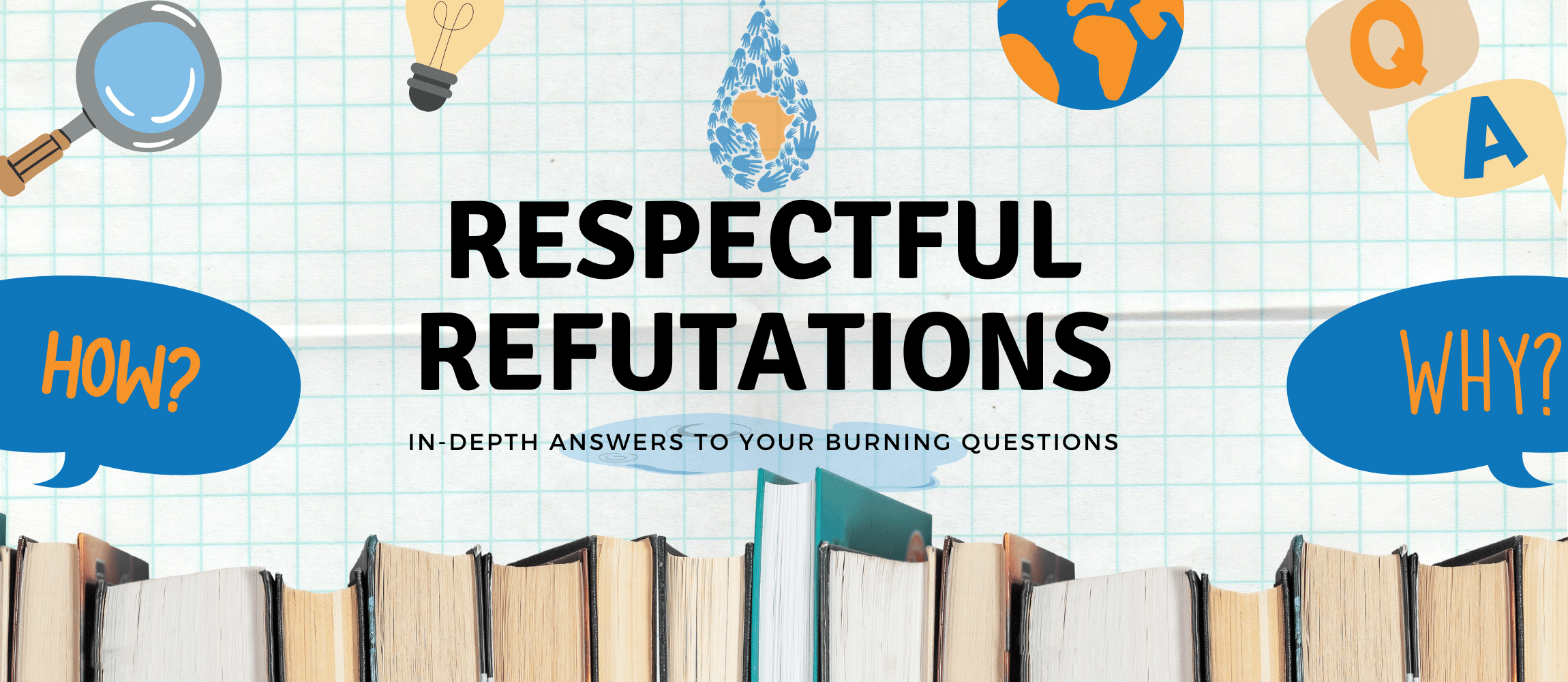
This is another entry in a series where we answer questions we’ve received from curious donors, website visitors, and casual commenters.
As we’ve said before, it can be difficult for those of us who have always had water piped into our homes to understand what it’s like not to have water. We haven’t needed to trek long distances, brave harsh wilderness, wait in long lines, or dig scoop holes into dry riverbeds to obtain often-contaminated water. These human experiences are at the core of what we aim to alleviate, but the water crisis is massive, nuanced, and ever-changing.
Our staff in the United States and overseas in our target areas live and breathe water, sanitation, and hygiene—yet we’re still learning new things every day. This series aims to share what we’ve learned along the way with anyone skeptical, curious, or (our favorite) thirsty for knowledge.
The Reality
Often, when we enter a community for the first time, our field officers report that community members have sought their own solutions to their water crises.
For example, in Sierra Leone, communities might send a few strong men to dig a well in the swamp, where water is plentiful. But swamp wells present other dangers: visible hazards, like snakes in the thick bush, dead leaves and tadpoles floating in the water, and invisible parasites and pathogens eager to find a host. Every year, as water tables lower, communities send men back to the swamp to dig deeper until it’s downright dangerous for someone without special equipment to be that far underground.
“Sometimes, the swamp water [would] dry up in the dry season due to [a] lack of rain,” said Morlai Kamara, 56, the harbormaster of Rosint Community, whose well was rehabilitated in 2021.
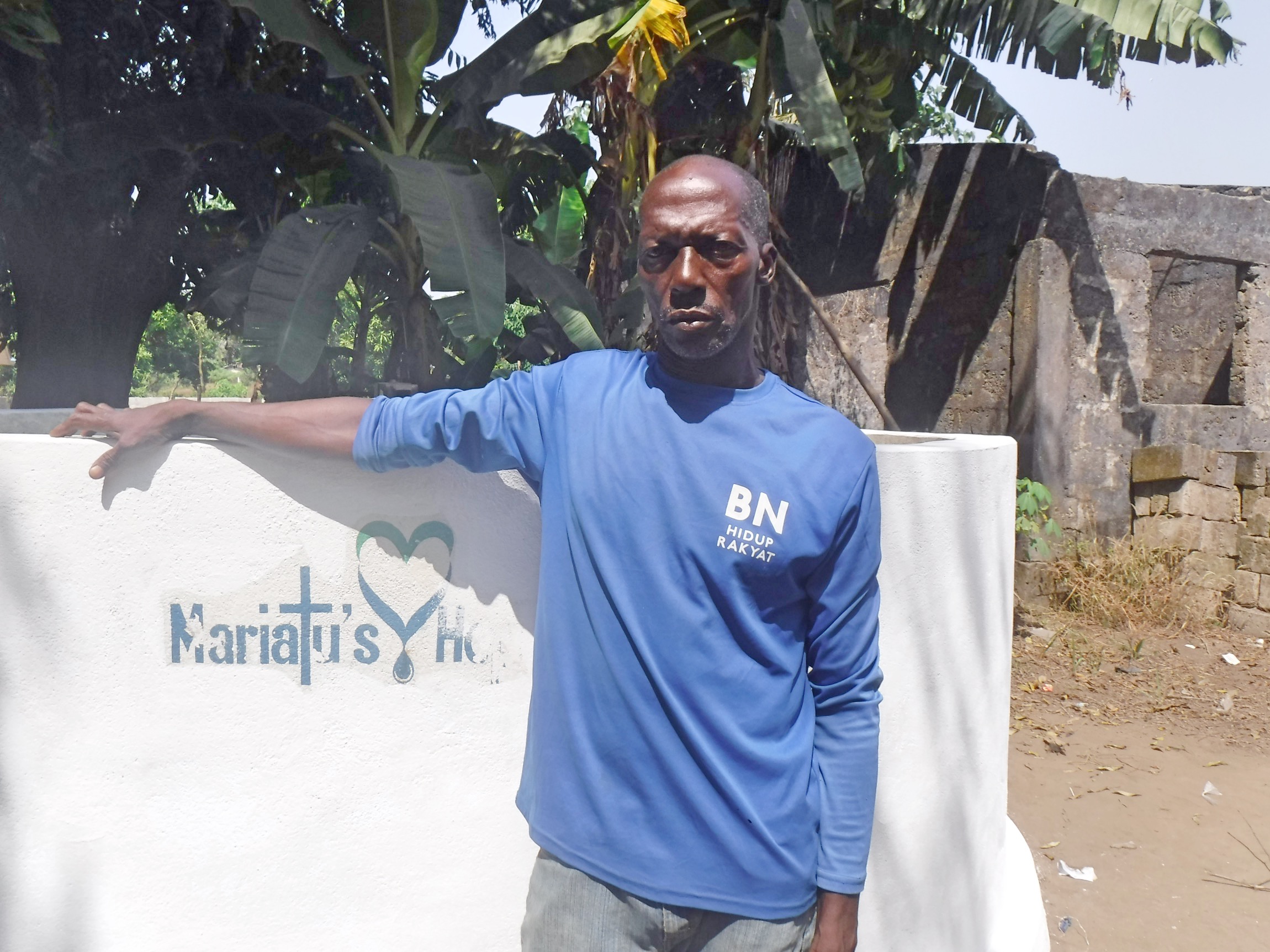
Morlai stands next to his community’s well one year after its rehabilitation.
“This was the most painful moment for me and [the] community people. We, the men, had to dig it deeper every year, maybe like four times, before [the] raining season [would come] before we had access to water. And sometimes, the deeper we dug the swamp, the more the water [would] become salty because we are close to the sea.”
Another example: during the dry seasons in Southeast Kenya, people carve out holes in dry riverbeds to capture the salty trickles of last season’s water. Sometimes, they must travel on foot for hours and kilometers each way to access rivers because all the water sources along the way have dried.
“The water from the scoop holes is mostly salty, making it unsuitable for drinking or farming,” explained Elizabeth Musembi, 46, whose community of Syunoo is slated for a sand dam and well construction this year.
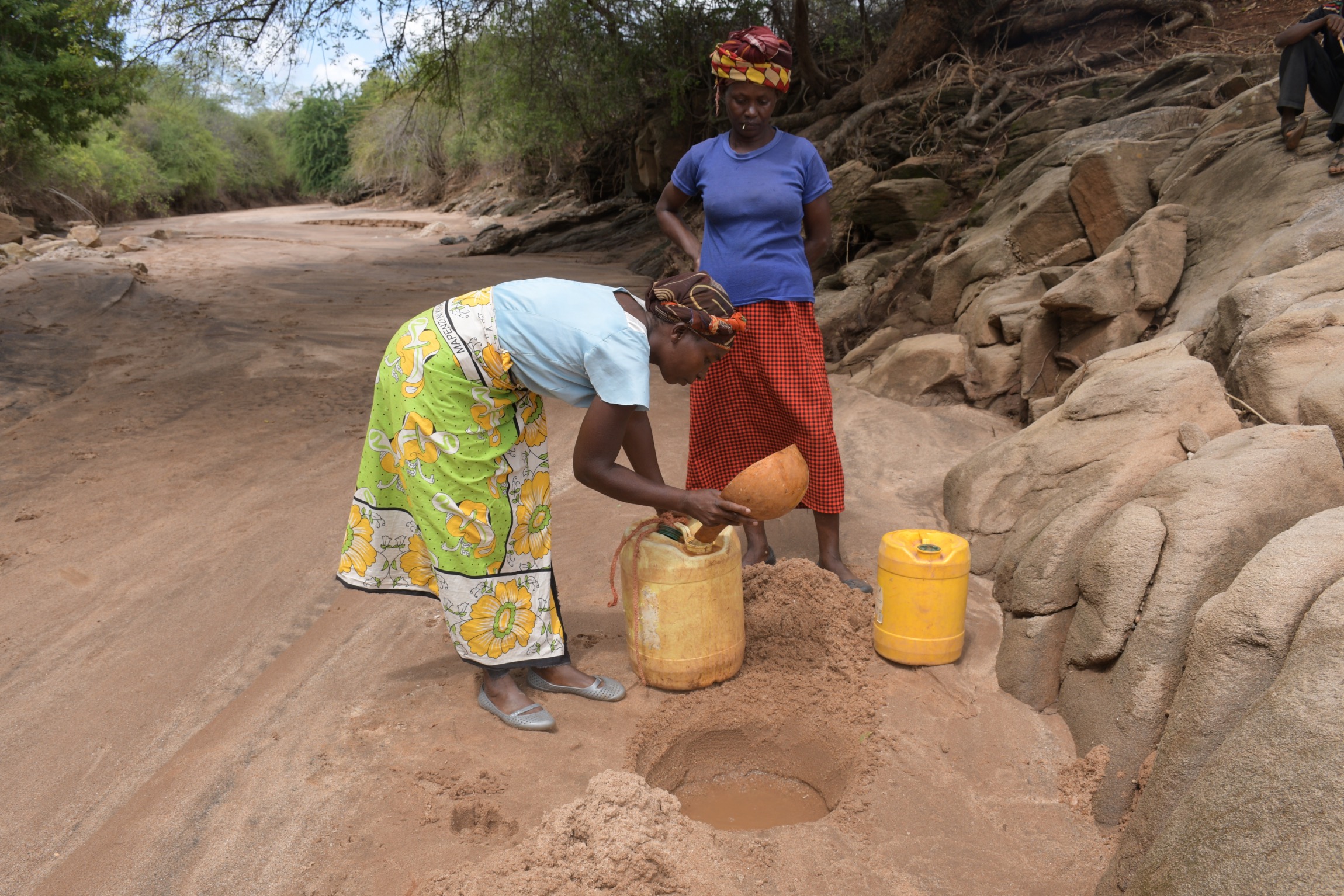
Elizabeth waits for her turn while another community member fetches water from a scoophole in a dry riverbed.
If Elizabeth dug a well at her home, all she would find would likely be mud.
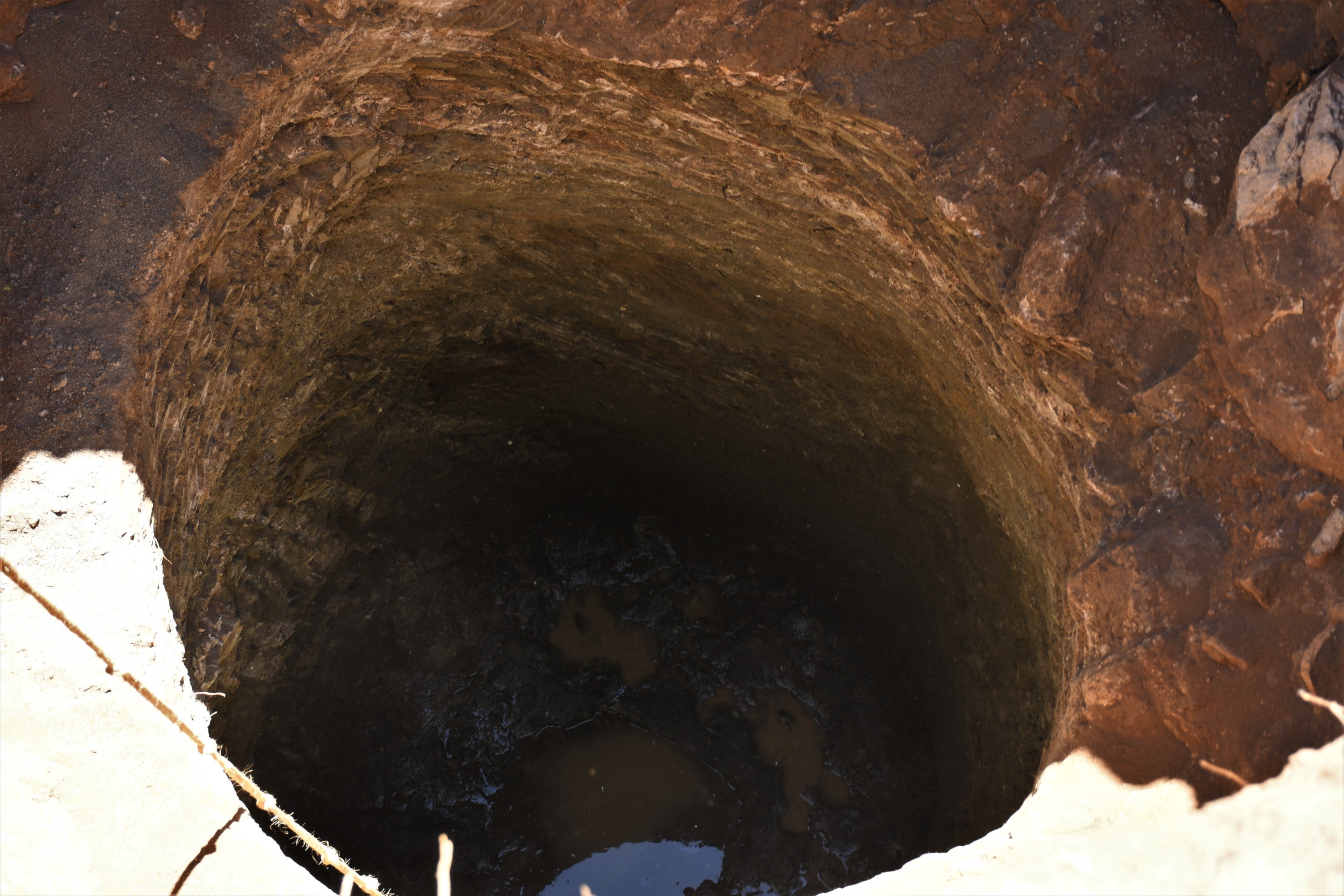
A dried-out hand-dug well in Southeast Kenya.
Our last example: in Western Kenya, communities with extra income often pool their resources to hire contractors for spring protection, sometimes accepting inexpertly protected springs. But too often, the funds aren’t available. So this region’s most often-used technique in trying to get clean water is to collect it very carefully, not allowing any dirt or decaying leaves into a water-fetching container.
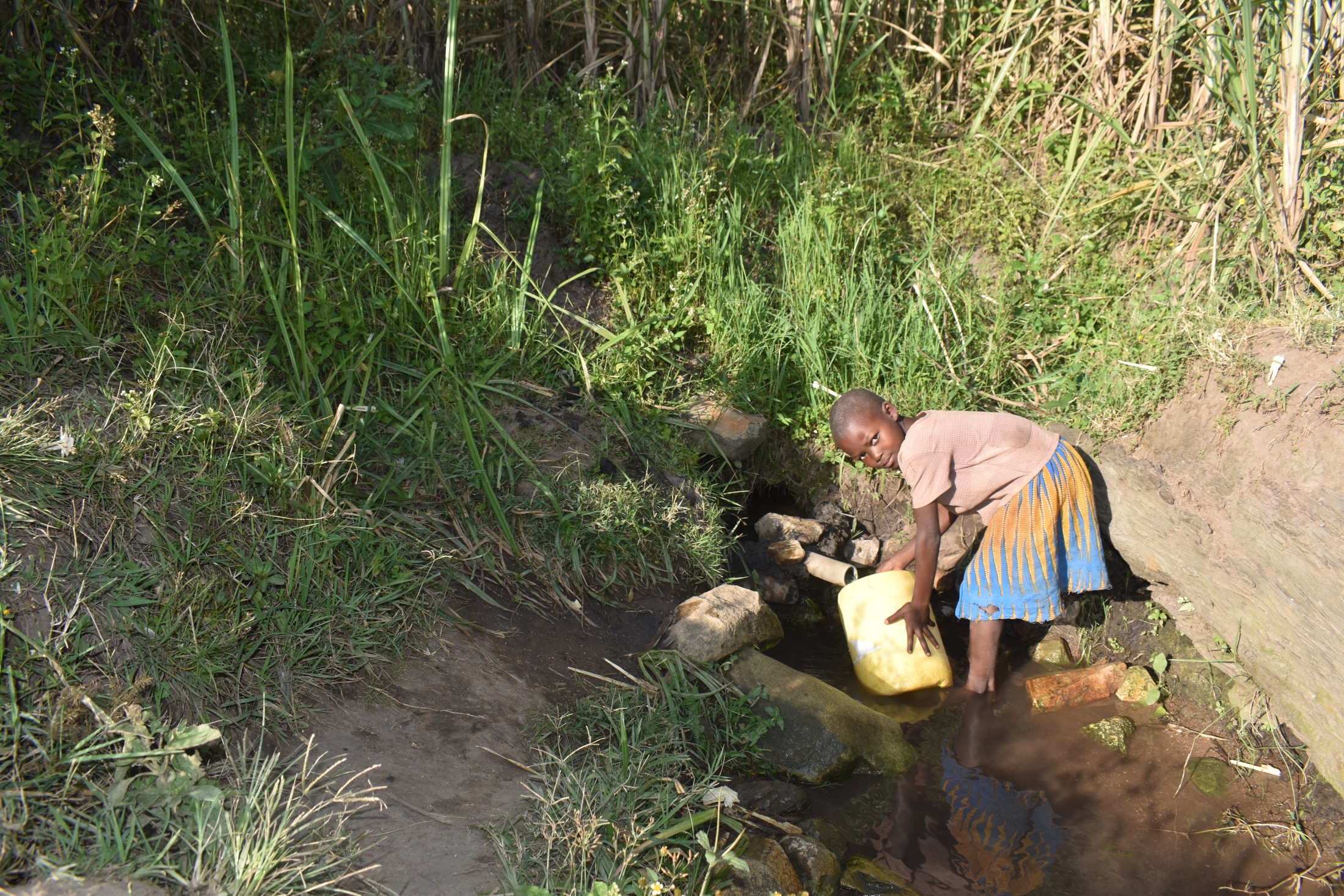
Shaleen collecting water before the spring was protected.
“Fetching dirty water has been a habit because using a scooping jug to fill water in the container is not easy,” said 8-year-old Shaleen, whose community of Sundulo received a protected spring last year.
“My hand gets tired sometimes, and I find myself not putting much effort to get clean water because I know that the situation will always be the same. Nothing changes.”
There’s also a problem with dishonest or misguided interference. There are reports of scams in all our working areas: “organizations” making offers to install a water project for a community, then disappearing with the money, or building a haphazard structure that breaks down early. Or well-meaning groups who construct a water project and promptly leave. When the water point runs into issues, it sits idle as community members return to using their former open and unsafe water points.
When sourcing water takes so much of people’s time, taking on a labor-intensive construction project, such as digging a well, isn’t feasible without help. Not to mention the monetary and technical resources needed to construct and support a sustainable, safe water point.
“There is a basic human physiological requirement for water to maintain adequate hydration and an additional requirement for food preparation. There is a further requirement for water to support hygiene, which is necessary for health.” – World Health Organization (WHO) Guidelines for Drinking Water
The Question at Hand
To say that the only thing people in water-stressed areas need to do is dig their own well is dismissive of many perils and obstacles that the asker might not be aware of. The question of why sub-Saharan people can’t dig their own wells also assumes that hand-digging a well would be possible—or helpful.
Some people wake up before sunrise and spend hours walking to find water daily. If securing safe, reliable water only meant digging a shallow well, it is safe to assume that many communities would have done so already.
Due to the growing number of hand-dug wells that dry up due to global warming or overuse, we only implement them when connected to a sand dam since the dams direct water to the adjacent hand-dug wells. This is why The Water Project employs such a variety of water projects.
If I wanted to dig a well living in the United States, my main concerns would probably be bureaucratic. I have easy access to the internet and the ability (if not the will) to save money and hire a drilling contractor. I could call my local water works department for tips. But I don’t have to worry about that because my home has public water. When I walked into my house for the first time, the taps already worked, and I never worried about accessing water again.
This is a stark contrast to what happens in sub-Saharan Africa.
“Over 2 billion people live in water-stressed countries, which is expected to be exacerbated in some regions as result of climate change and population growth.” – WHO
Recently, we asked our teams overseas what makes their work challenging. Some of what they said might be obvious, like global warming constantly nipping at their heels. Even in established, reliable wells, the water sometimes disappears, and unpredictable weather means rainwater catchment tanks and sand dams don’t fill up when they usually would.
But there are struggles in sub-Saharan Africa that people who live in countries with reliable infrastructure could only imagine. Sub-Saharan roads can be notoriously difficult to travel, but prolonged periods of drought and rain often make specific routes inaccessible. High fuel prices worldwide make community visits more costly. It’s been more difficult to source parts to repair broken water points due to global product shortages. Power outages and unreliable internet constantly interrupt work.
I could go on.
Reliable Water Must Come First
When we work with a community, we don’t ask for money. But what we do require is a commitment. We ask for community members’ assistance sourcing building materials or help in construction. We ask them to form committees to ensure the water project is well cared for and to notify us when things don’t work as they should.
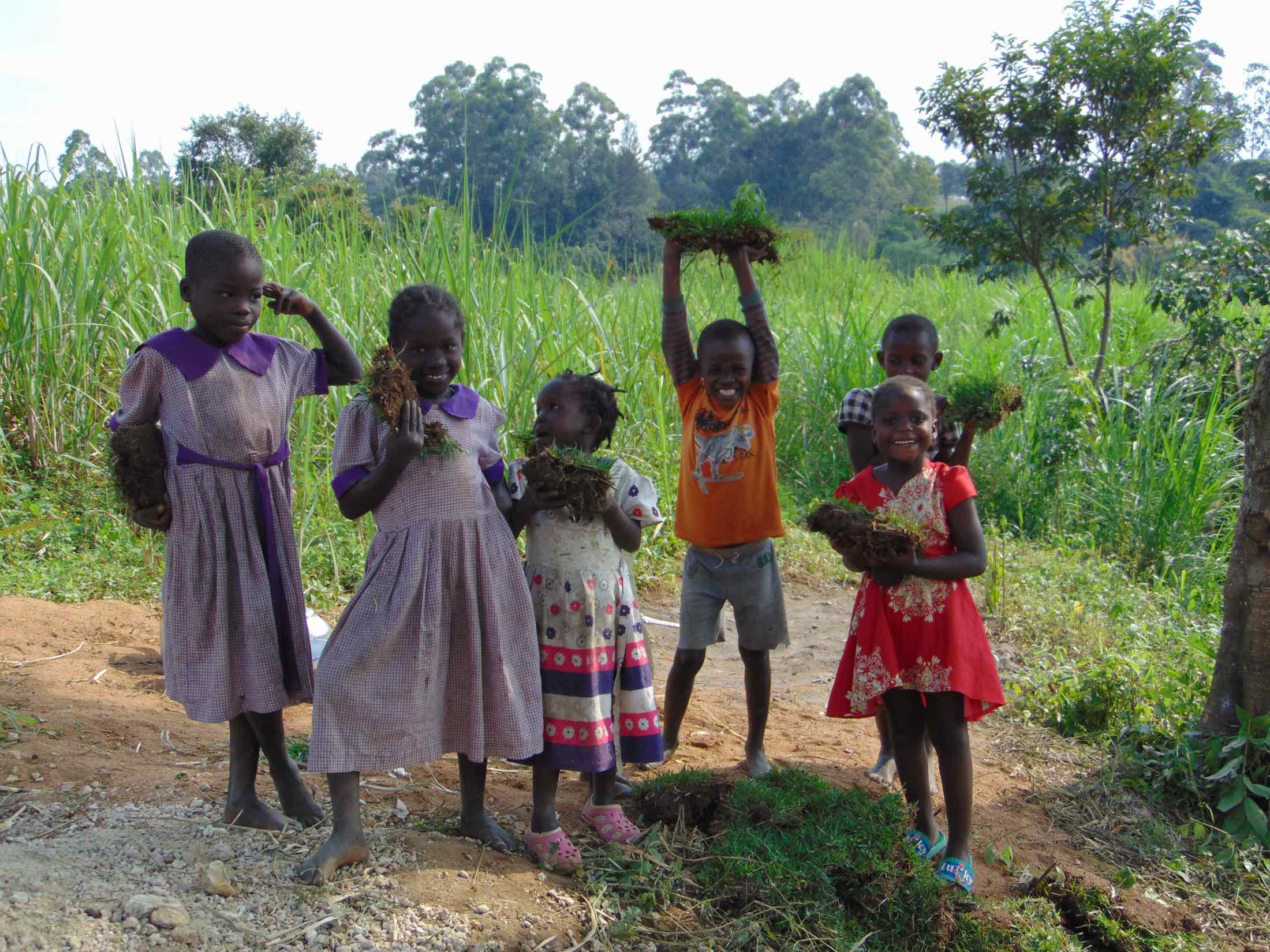
Children from the Malimali community in Kenya carry sod to a spring protection construction site, where artisans will use it to cover and protect the spring box.
We know the impact water access has on communities. Community members find themselves healthier without the burden of sourcing water every day. They have free time. They can save the money they previously spent on water-related illnesses. They do better at work or school. They accomplish more and are better able to provide for their families.
There’s a reason access to water is a right rather than a privilege. Water itself gives people the energy and freedom to dream of ways to enrich their households and communities. Those who have lived the experience can express it far better than I can.
“The joy in my mind is too much that I don’t know how to express it right now,” said Morlai from Rosint (mentioned at the beginning of this post). We rehabilitated his community well a year ago, and the changes in Rosint are astounding.
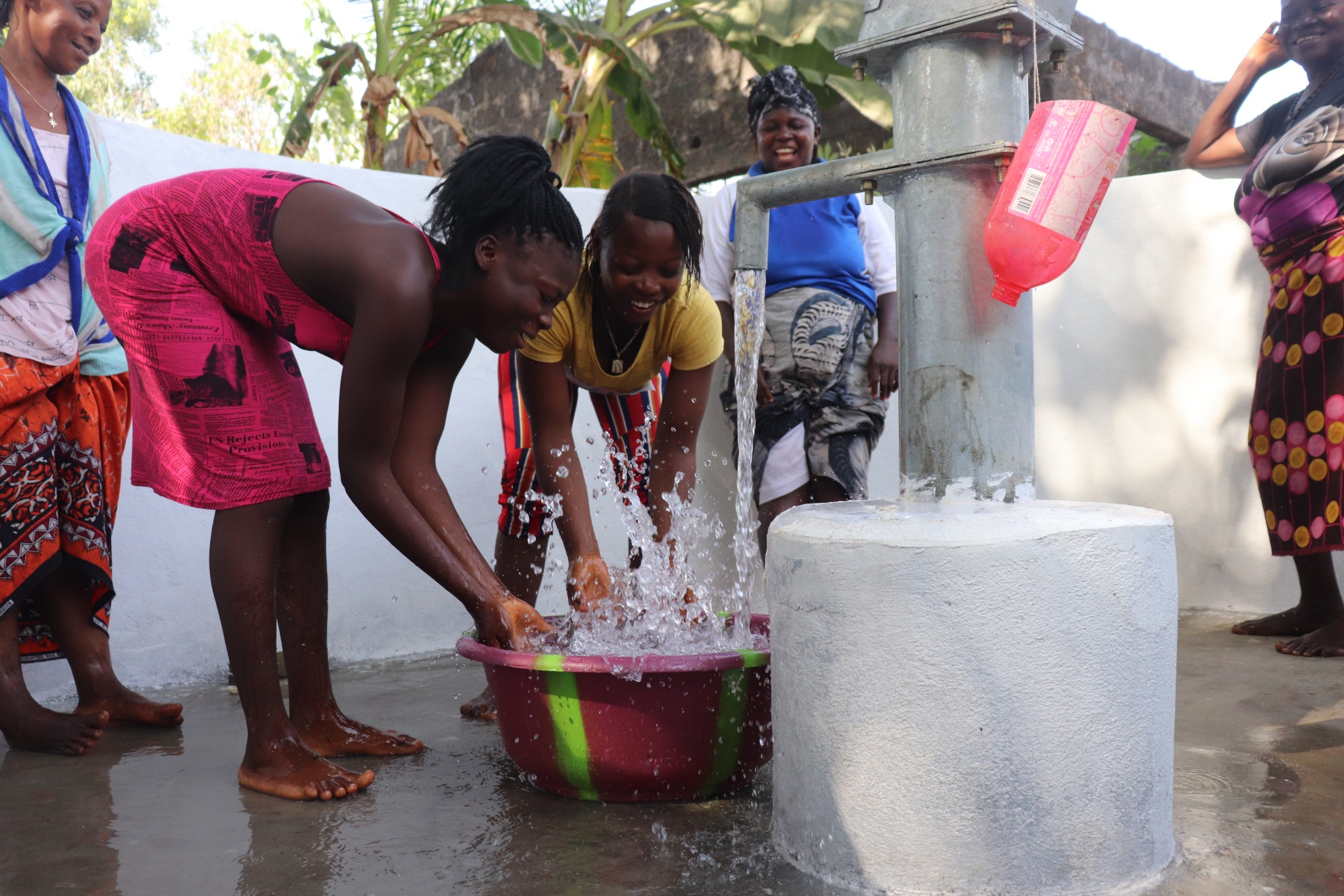
Community members in Rosint celebrate shortly after the well’s completion.
“My community is free from all the sicknesses that we used to spend plenty [of] money on because this water facility is providing [us] with clean and safe drinking water. It has [relieved] the burden I used to have when we [got] closer to the dry season.
“… Because of this water facility in this community, more buildings are coming up, and people are buying land to build more houses, thus the community is expanding. And our hygiene and sanitation has improved greatly compared to the previous years. For a long time now, I have wanted to have access to clean and safe drinking water in my community so that [our] women and children will be free from waterborne diseases that were affecting us greatly. We thank God that we have achieved that dream a year ago. This has been my plan and goal, and I and [my] community have achieved it.”
Home More Like ThisTweet